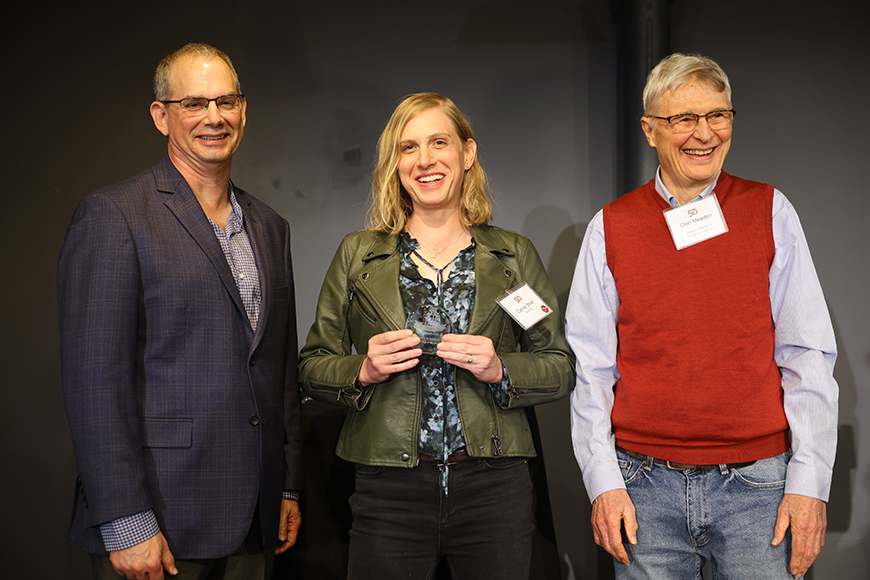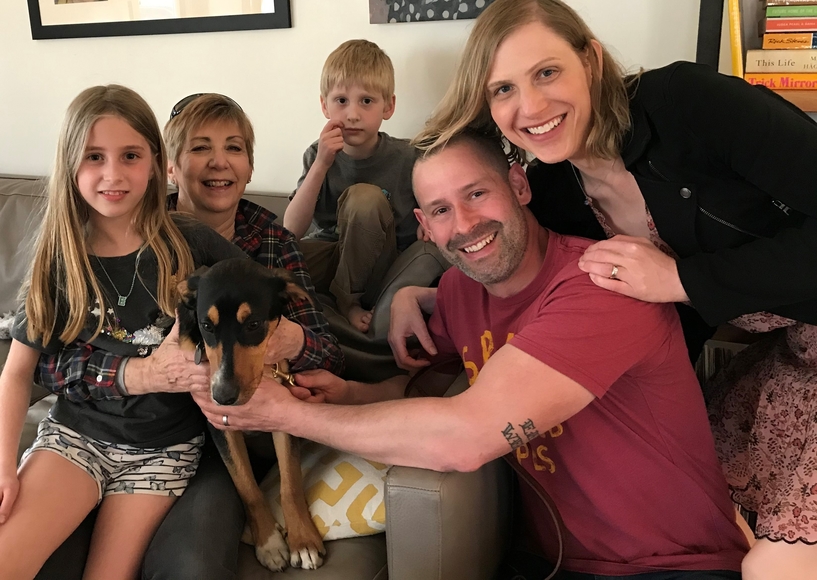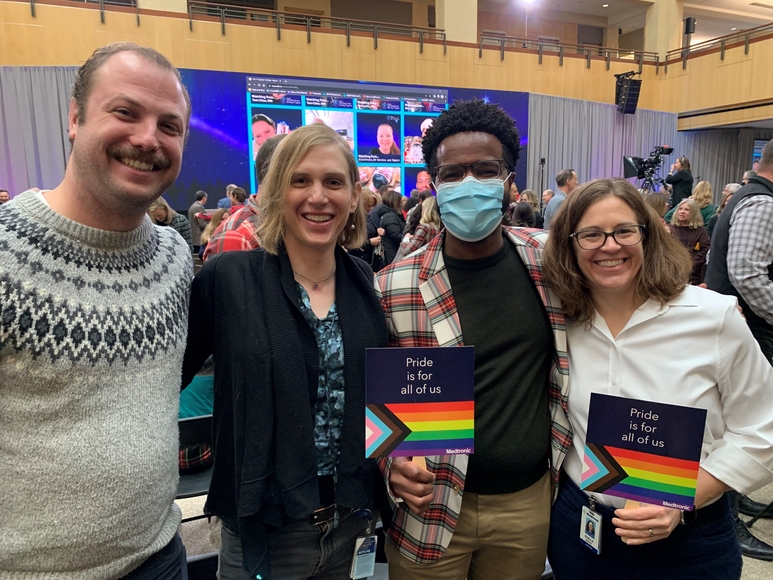Interview with Alumni Award Winner Dr. Carrie Strief

For Alumni Award winner Carrie Strief (PhD, ‘07), mathematics was always intuitive and enjoyable, but the rigor of her graduate program at the School of Statistics was uniquely challenging. Ultimately, the intellectual training and role modeling provided by her professors at the U prepared her for a successful career in industrial statistics. Now at Medtronic, she uses theoretical concepts to solve a wide variety of real problems in healthcare, and is motivated by work that values life–both human and animal.
What brought you to the U of M School of Statistics for your degree? How did you end up studying statistics?
Having enjoyed my studies in mathematics as an undergrad, I knew I wanted to pursue some sort of graduate degree in a mathematical discipline. I was initially debating between operations research and statistics, but I found statistics to have more interesting theoretical underpinnings and more meaningful career options. I chose to attend the U of MN School of Statistics since it optimized multiple facets of my grad school desirability function: solid education, excellent fellowship/funding options, proximity to MN family, and–to be honest–a nice location on the Mall.
What is one of the defining experiences from during your time as a statistics student that you still think about?
I still remember one of my first homework problems from Stat 8101–compute the odds of winning the pass line bet at craps. I like that problem since it requires a convergent infinite series for a very concrete, real-life scenario. Using the abstraction of infinite mathematics to solve real life problems has always been intellectually engaging for me.
What do you do now? What energizes you about it?
I work for Medtronic as an industrial statistician, meaning that I provide statistical services for non-clinical functions like manufacturing, R&D, and product quality. My daily statistical work involves many of the techniques which are taught during the first couple years of PhD coursework–regression, design of experiments, Monte Carlo simulation, etc. Although the statistical techniques I employ are often fairly straightforward, I find joy in the process of translating real problems into the world of statistics, and then translating them back. Also, I love that my work is in the service of human health; the Medtronic mission of alleviating pain, restoring health, and extending life gives my daily job a significant amount of meaning.
What significant hobbies and personal responsibilities also fill up your days?
When I’m not doing statistical work, I spend much of my time with my family. I have one husband, two human children, and two fur babies, so life is plenty busy! I also love home cooking, travel, and jogging/biking/cardio.

How has your industry/profession changed since you started your work in that area? What should current students understand about your industry/profession if they are considering it for themselves?
Although I tend to specialize in analyzing ‘small’ datasets, most of our new job postings focus on big data applications. So just like many industries, the Medical Device world is increasingly looking for statisticians with excellent computer science and data mining skills.
What do you like most about being a statistician?
From a career standpoint, being a statistician is wonderful in that one can earn a very decent salary while still having a good work/life balance. From an intellectual perspective, it’s fun and engaging to apply my statistical skills within a number of scientific disciplines. The variety of applications and variety of problems keeps my daily life interesting.
What is a professional or personal accomplishment you are very proud of? Why?
The FDA still requires that medical devices be tested in animals prior to human use. Some of that testing may be unavoidable, but there are many opportunities to leverage new technology to prevent unnecessary sacrifice of lab animals. I’m particularly proud that I’ve been able to design experiments and publish results showing that, for particular blood bio-compatibility metrics, in-vitro testing is just as effective as in-vivo testing. This research will help to reduce the number of sacrificed animals, as well as reduce costs for Medtronic and our patients!
What professional or personal challenges have you had to overcome, and how have they contributed to your success today?
As a transgender lady, I’ve definitely encountered some challenging experiences in the workplace and in my personal life. During the early years of my gender transition, there were some colleagues who refused to acknowledge my existence–they wouldn’t even greet me at the office, let alone work with me as a statistician. As a statistical consultant, this loss of “customers” was very much a threat to my livelihood. Thankfully, Medtronic’s culture as a whole is quite LGBTQ-friendly, so every customer that I lost was replaced by one or more new, trans-supportive colleagues. The whole experience taught me a great deal about perseverance and survival within office politics. Even in an ostensibly scientific atmosphere, it’s important to understand what values and incentives are motivating your colleagues. Finding allies, thinking strategically, and staying true to my own statistical professionalism helped me to survive and thrive.

When you think about the School of Statistics and the very best parts of it, what comes to mind? If someone saw your face light up while you were talking about some aspect of the school, what would it be?
What lights me up are memories of those professors whom I most admired and/or most saw as role models. At risk of picking favorites, I probably light up the most when thinking about Professors Meeden, Sudderth, Hawkins, and Grund, each for somewhat different reasons. I admired Professors Grund and Hawkins for their professionalism and desire to use applied statistics for meaningful, real-world applications. Professors Meeden and Sudderth were quintessential examples of scholarly gentlemen–their avuncular personalities belied a kindness for students and love of education that I try to emulate whenever I’m teaching a class.
What is a specific thing that makes you proud to be associated with the University of Minnesota or the School of Statistics?
Up until grad school, I found mathematics to be relatively easy and intuitive. The PhD program at the school of statistics was the first time I felt deeply challenged mathematically, and I’m ultimately grateful for that level of rigor and how it prepared me to grow as a statistician.


